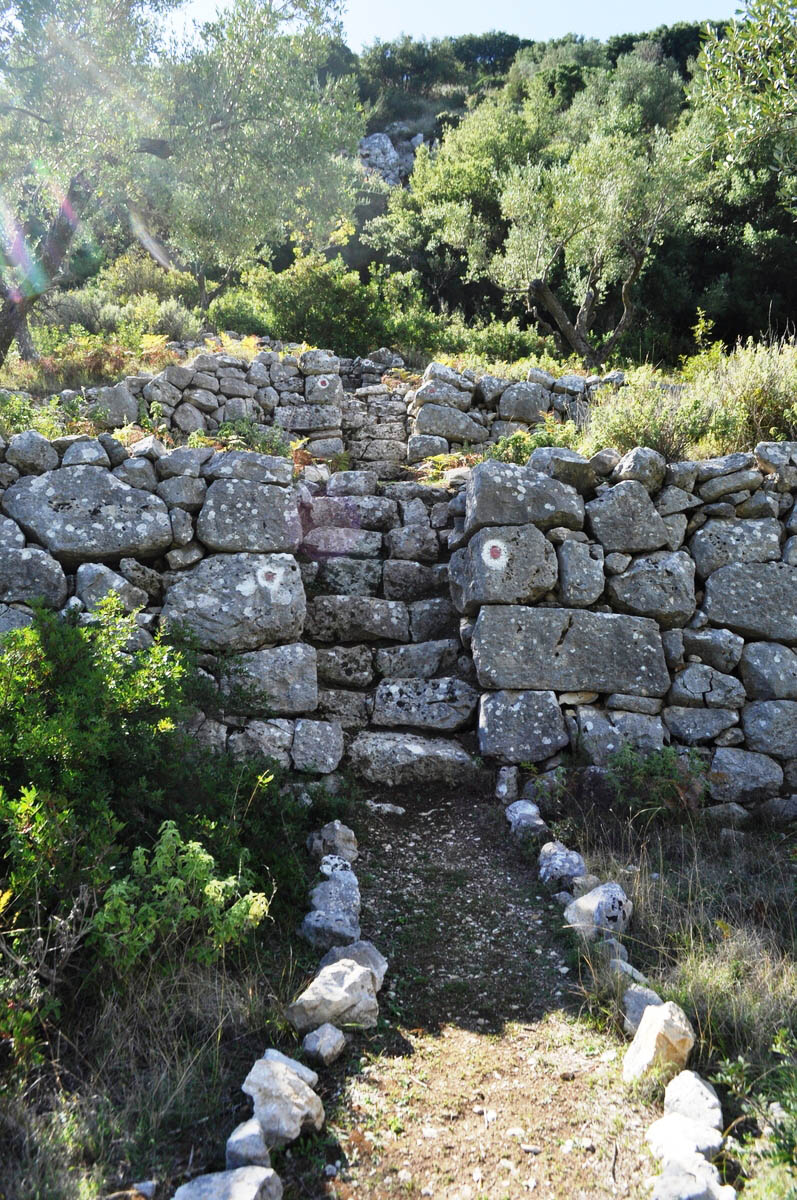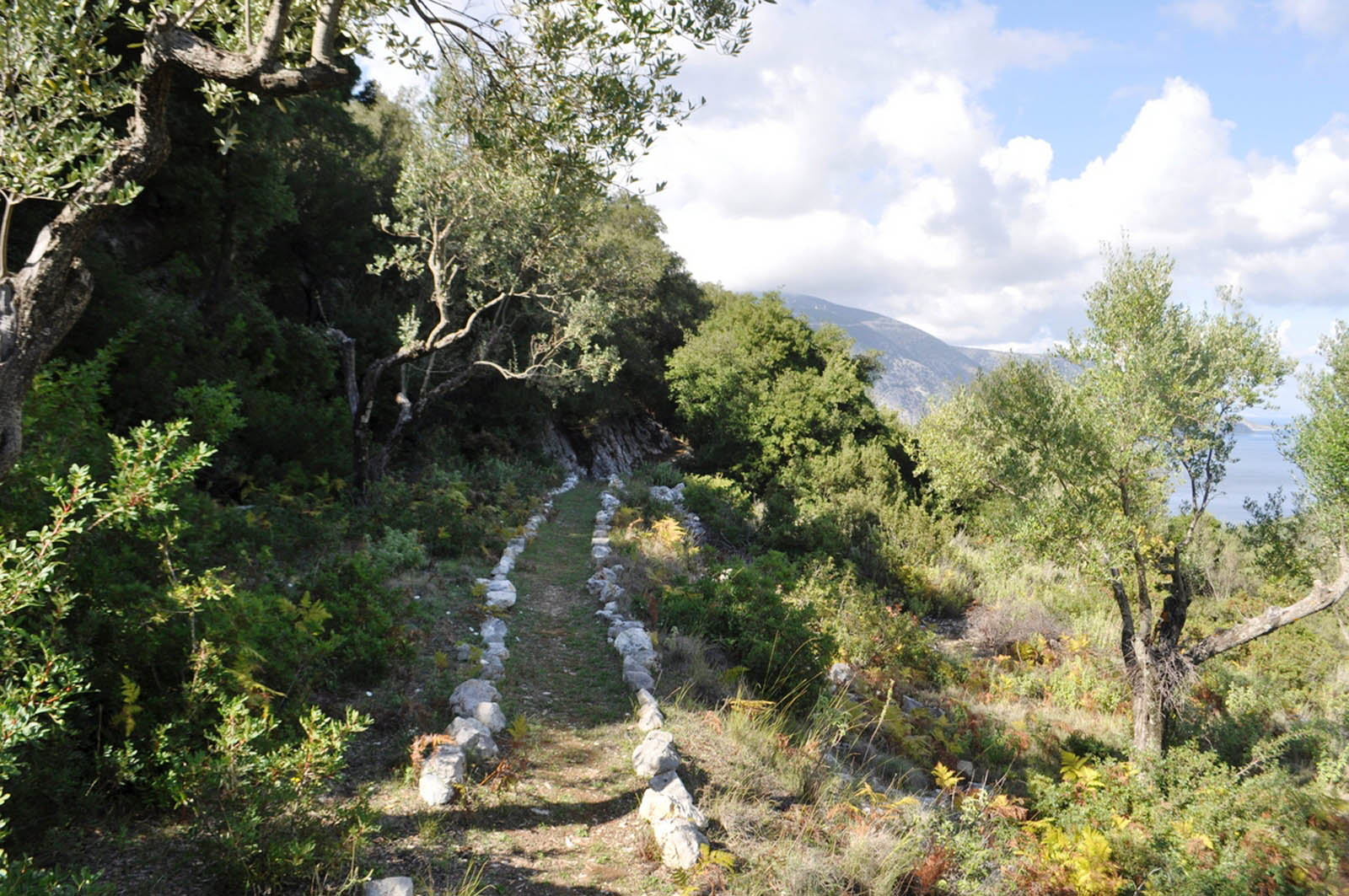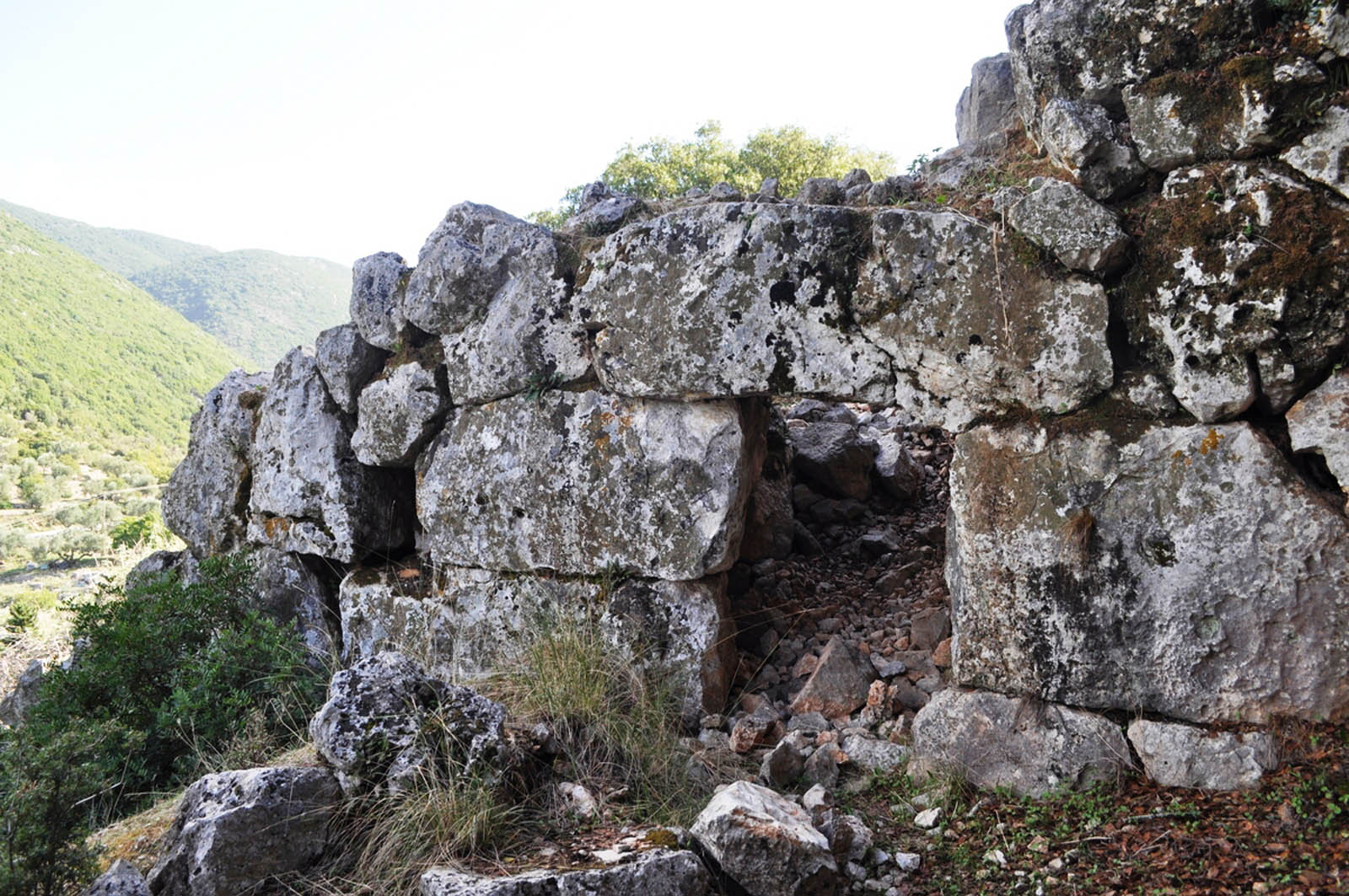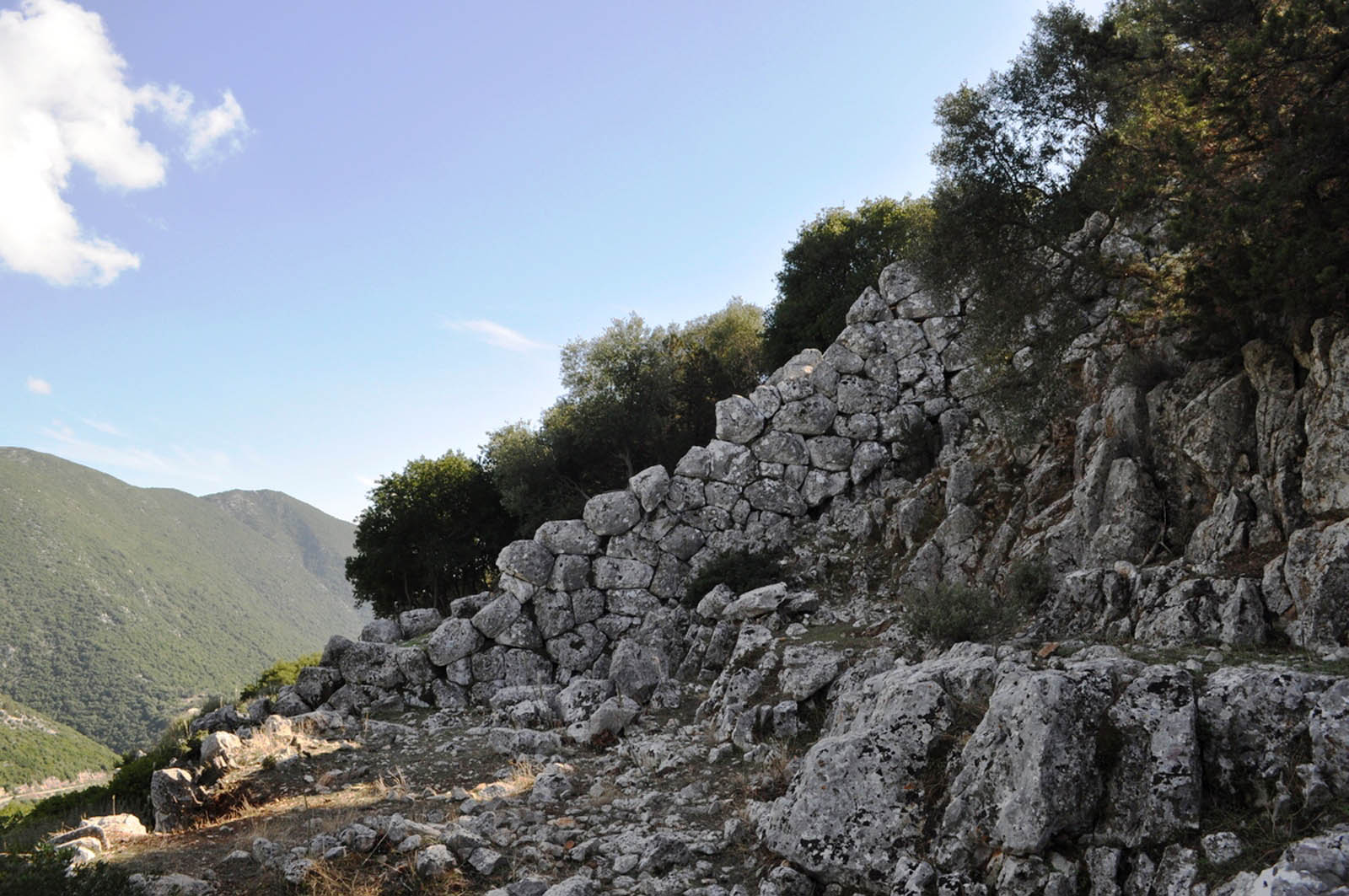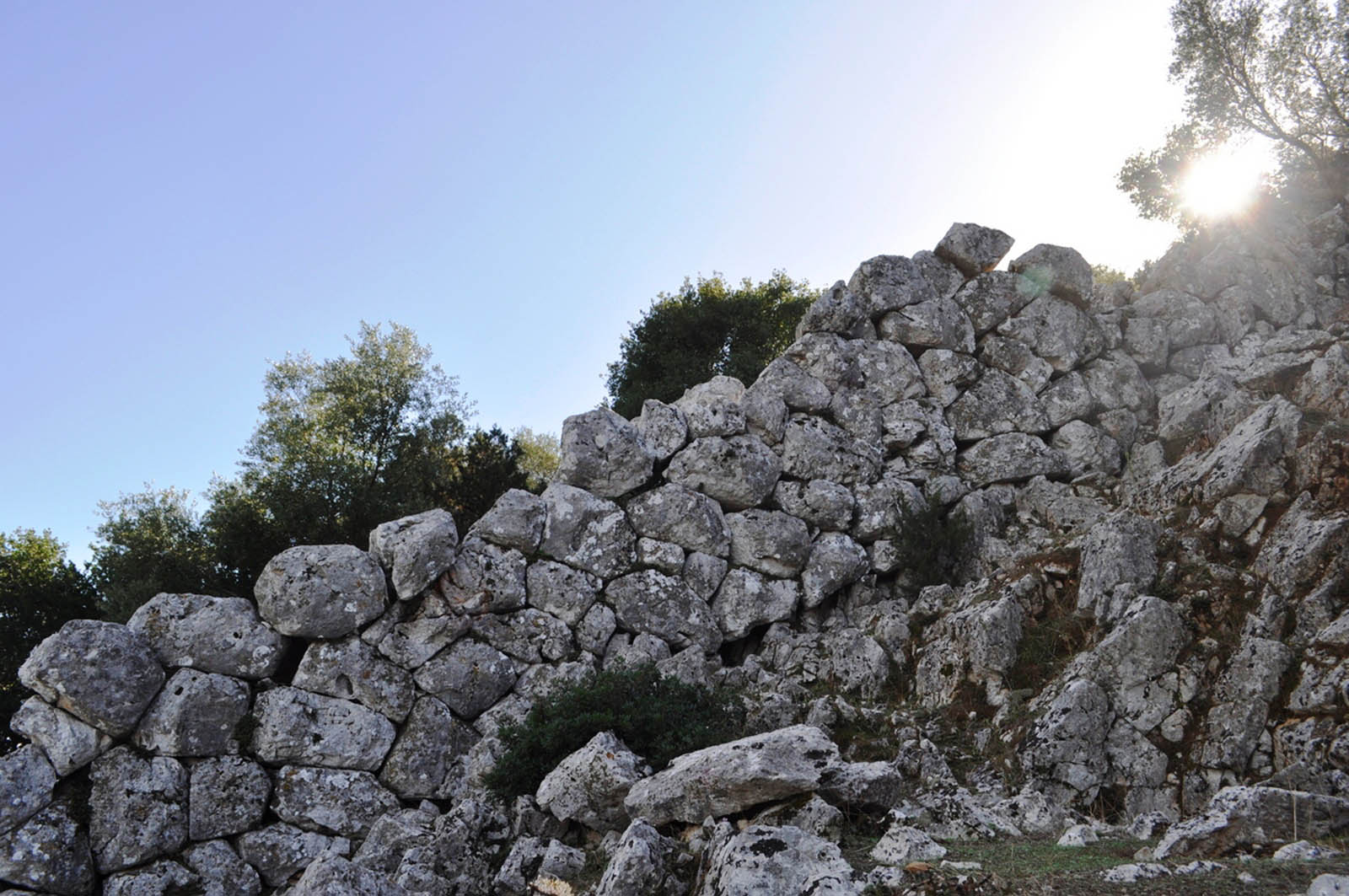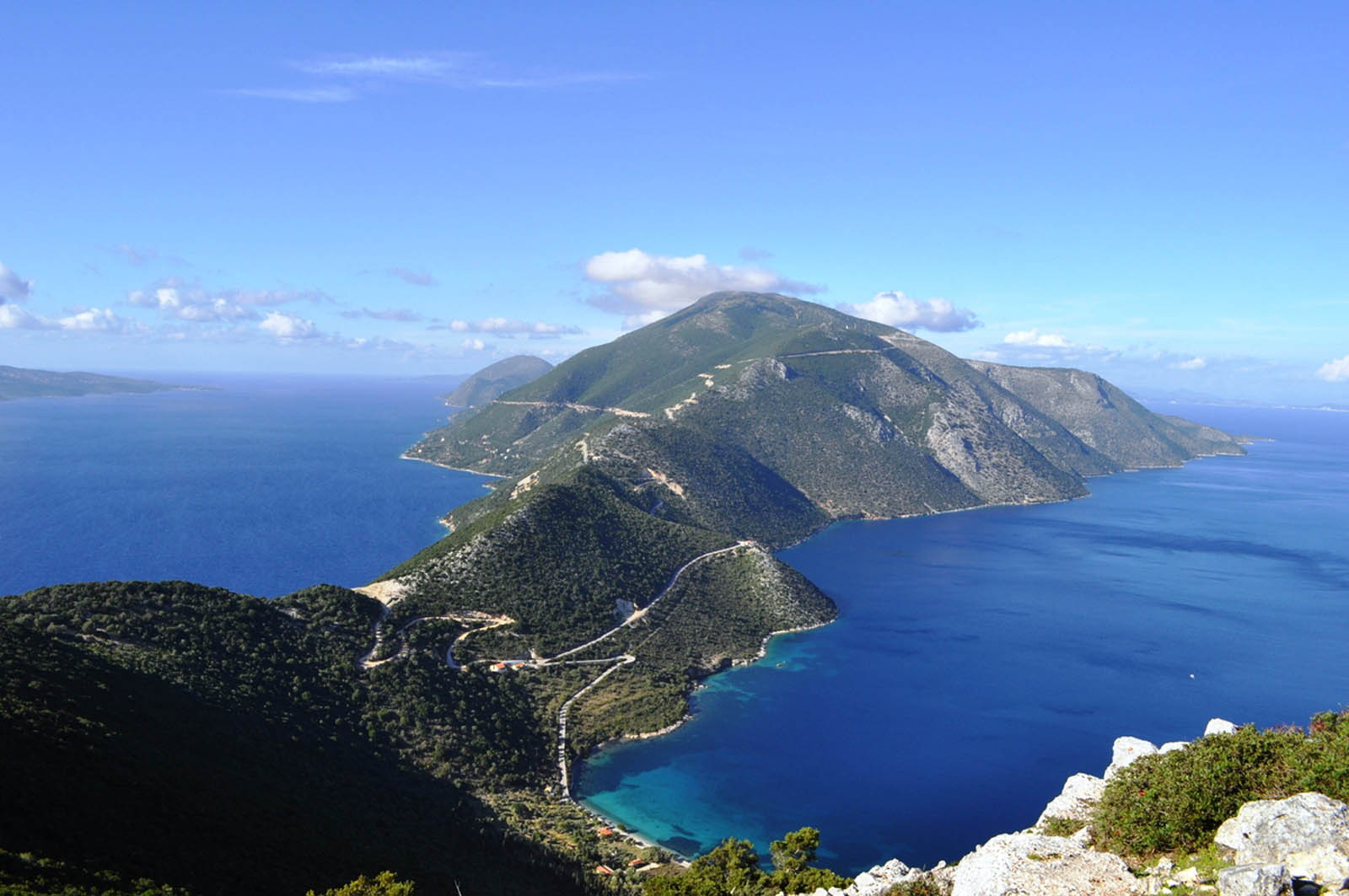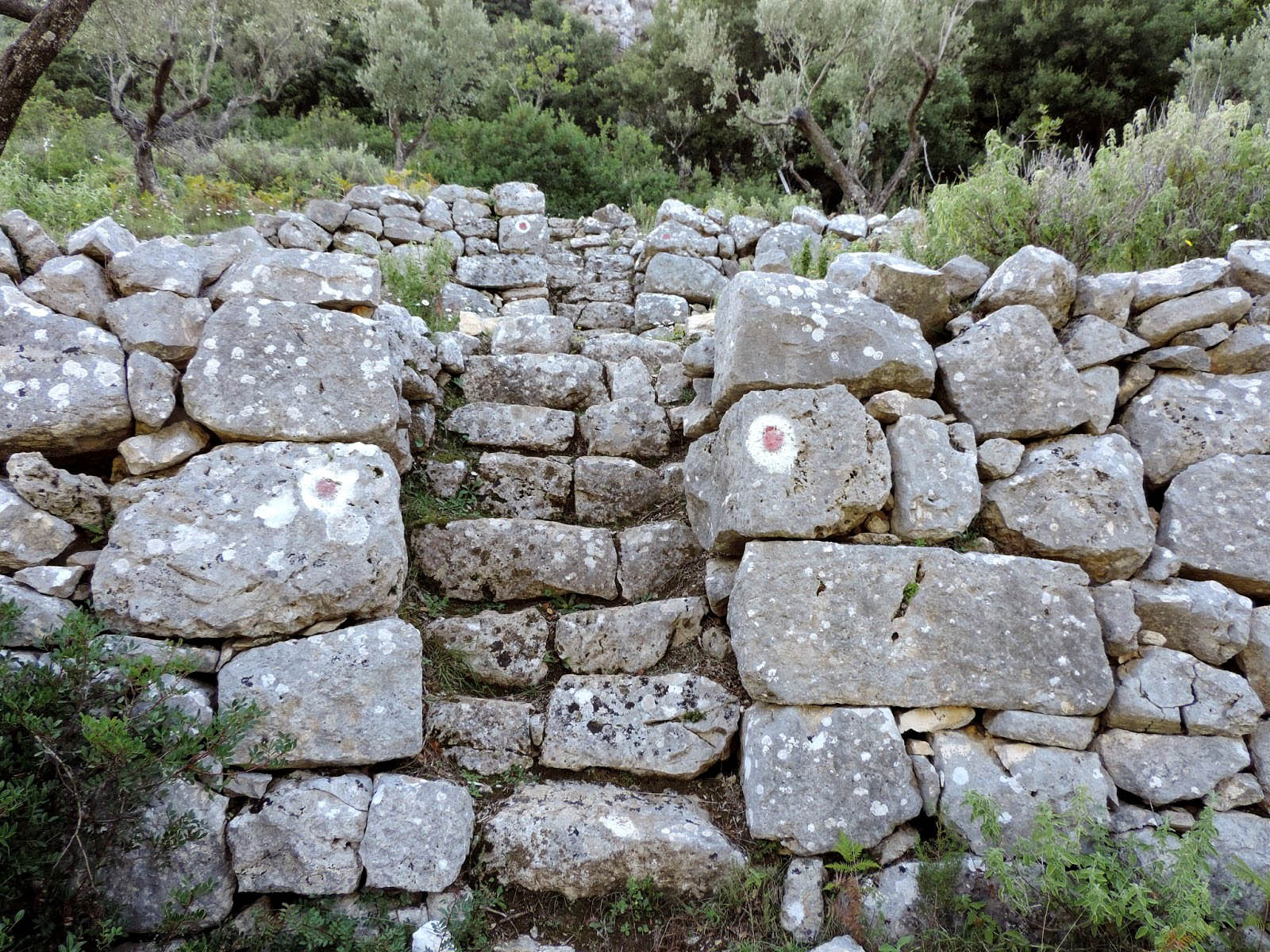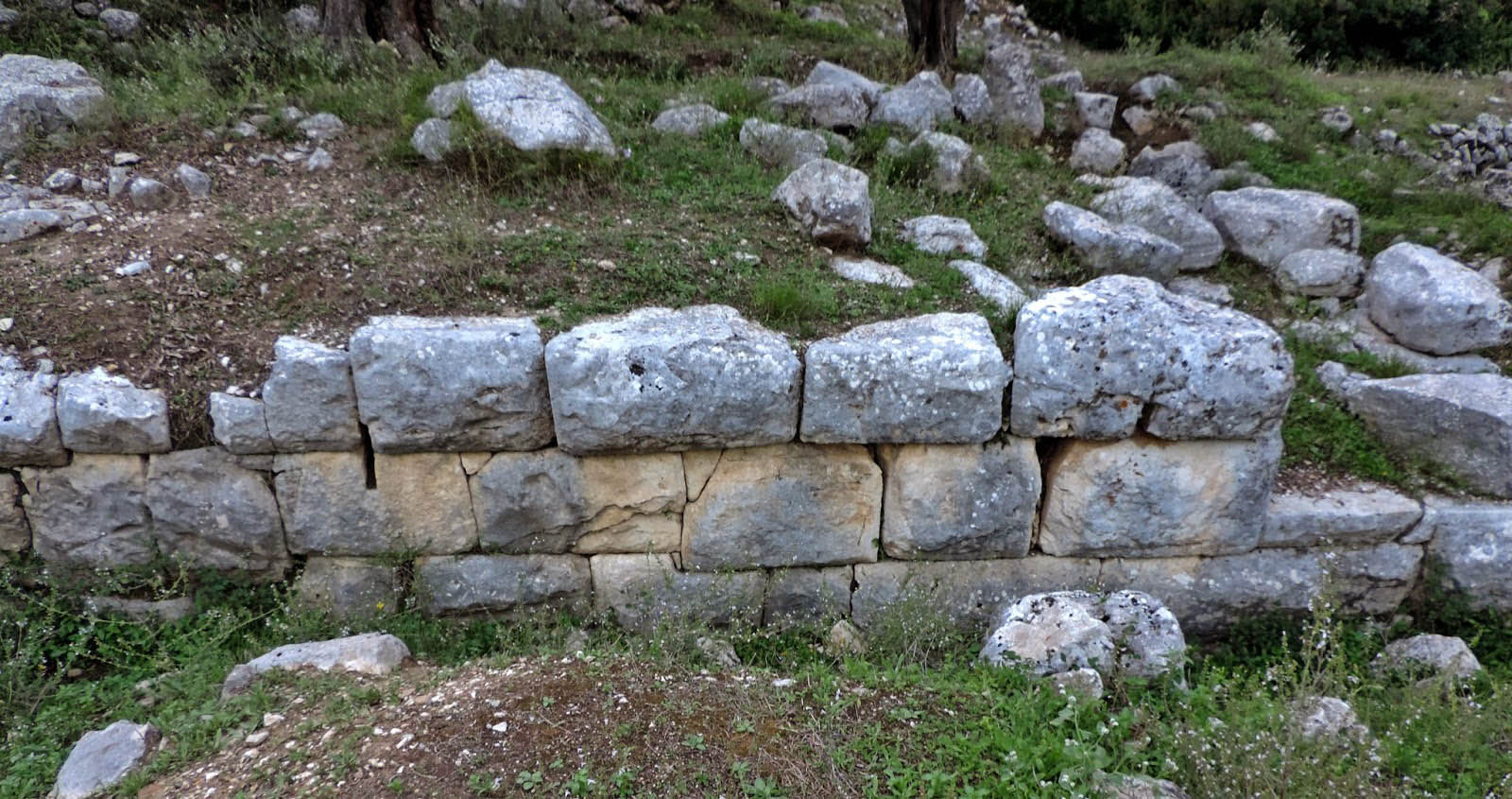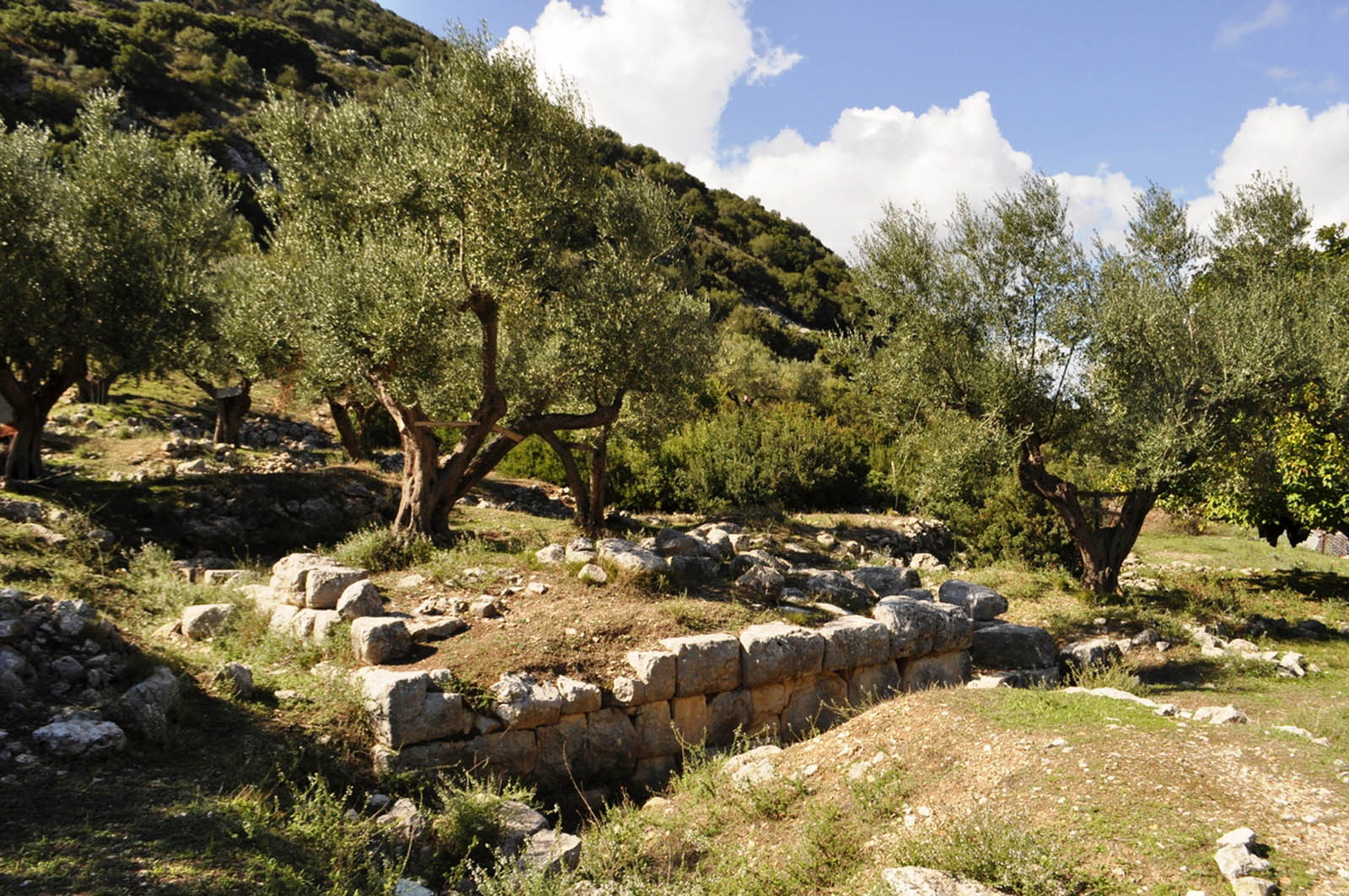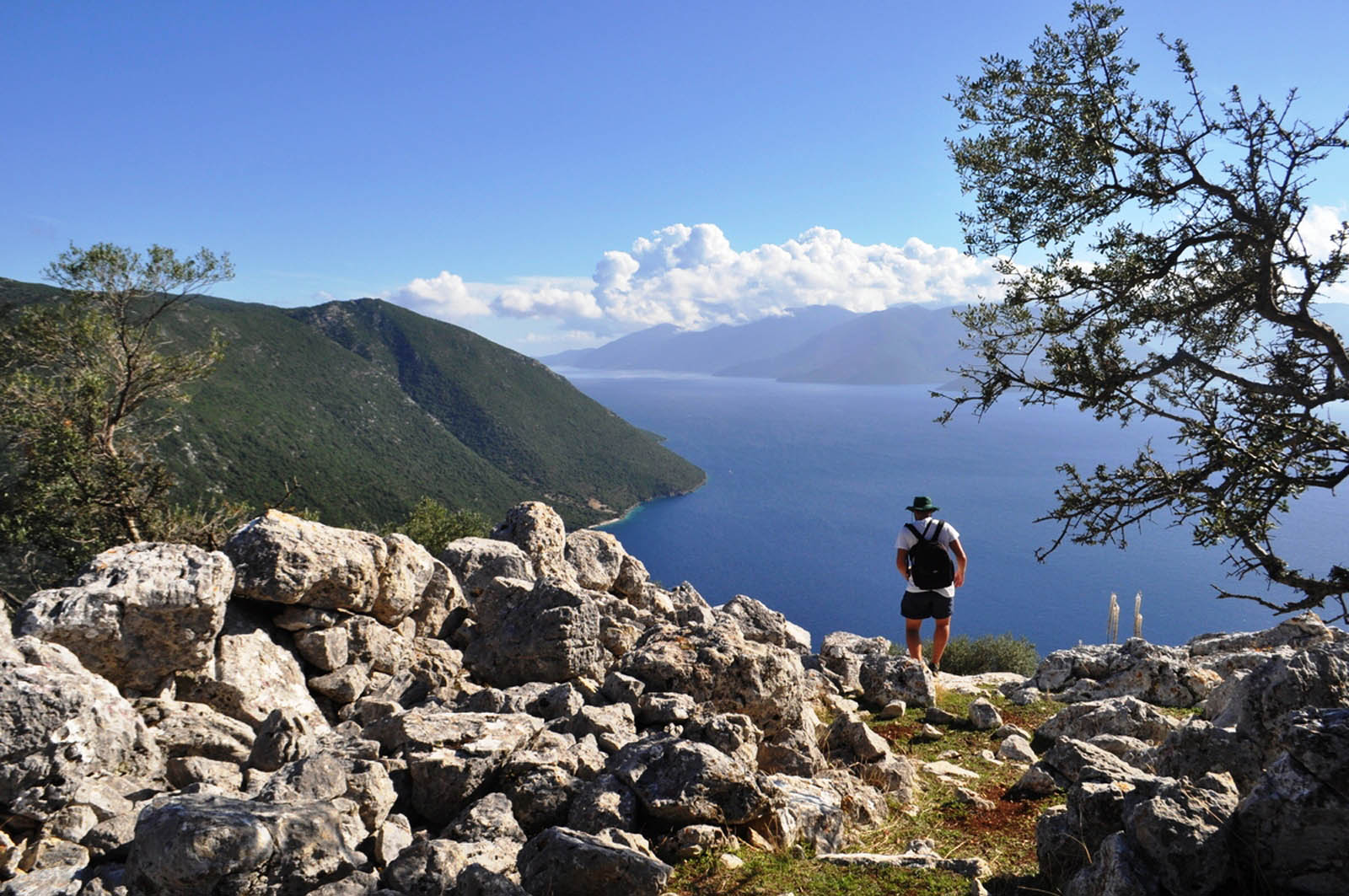Archaeological sites
Introduction
Ithaca has always attracted the attention of archaeologists, historians, students of literature and simple hikers and explorers because it has always been associated with Odysseus and the epic poetry of Homer.
Indeed, the first record of researchers to arrive in Ithaca in search of Homer’s Ithaca is the early years of the 19th century. William Gell, William Leake, Heinrich Schliemann, Wilhelm Dörpfeld, Wilhelm Vollgraff and Nicholas Kyparissis gave much significance to the remains and findings at the ancient settlements-Aetos Pass, Pilikata, Agios Athanasios (School of Homer), Stavros, the Marmarospilia, Marathia, and Loizos’ cave.
During the 1930s, the British School of Archaeology, under Professor W. A. Heurtley, carried out extensive explorations on what we already knew to be notable archaeological sites in the north of the island. His findings, numerous and impressive, were the starting point for a broader archaeological and historical review of this area and its importance. Exploration continued in the south of the island (Aetos and Marmarospilia), under the Odyssey Project, led by Professor Sarantis Symeonoglou and his team from Washington University in St. Louis, U.S.
Excavations were also carried out in the north of the island (Pilikata, Homer’s School) by the team from Ioannina University, in Greece, under Professor Litsa Kontorli-Papadopoulou.

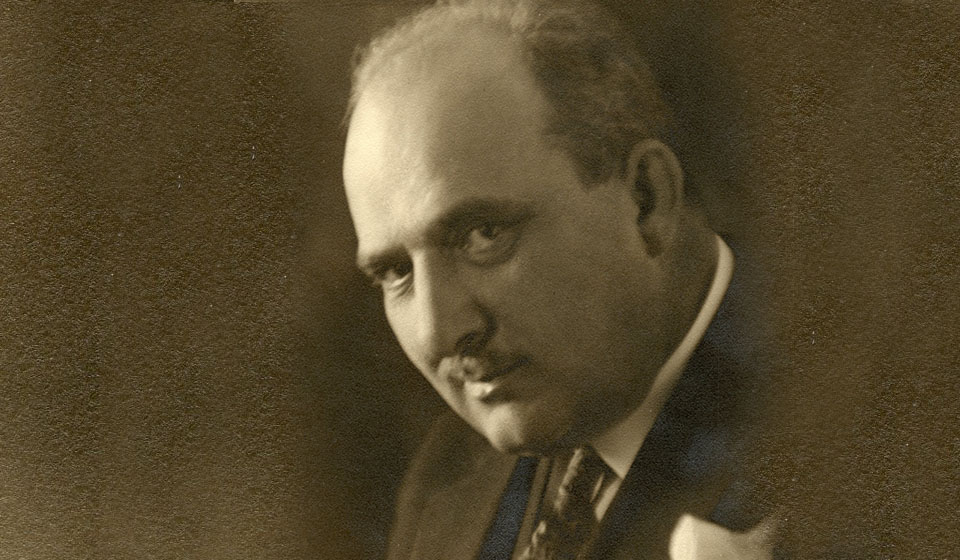
“The Mycenaean presence in the Ionian islands was, from an early stage, linked to the Epic Homeric poetry when it was believed that all references were from Mycenaean times. However, once it was established that there were references to other periods, the late Mycenaean (1400-1411 B.C.) and the pre and geometric periods (1100-800 B.C.), it was inevitable that the debate had to be broadened and previous positions reconsidered. It was no longer sufficient to rely on the Mycenaean remains because the island referred to as Ithaca by Homer had to present evidence of pre- and geometric period occupation. Ithaca is unique amongst the Ionian Islands in that it is only here that remains from all Mycenaean and pre- and geometric periods are to be found. In particular, at Loizos’ cave in Polis and at Aetos, there is rich evidence of all these periods. Ithaca is unique in providing this accumulation of evidence”. 1
References:
1 Vikela Eugenia, Ithaca and the other Ionian Islands from Prehistory to the 5th century. BC .: Convergence and Divergence, pp. 25-64, Myths, Texts, Pictures: Homer’s Poems and ancient Greek art, Centre of Odyssean Studies, Ithaca 2010
Alalkomenes
This site is on the slopes of Aetos Mountain, on the narrow point which links the north and south of the island and looks down over the port of Piso Aetos.
It is here that we find the ancient settlement of Ithaca known as Alalkomenes in the Hellenistic period. The settlement was in an ideal strategic position as to the north and south are two natural, protected harbours and, from its Acropolis, there is a clear view of the whole of the channel which separates Ithaca from Kefallonia as well as sight of the seas to the mainland. As early as the first years of the nineteenth century, this site had been identified by travellers, but it was Heinrich Schliemann who carried out the excavations and very soon unearthed bronze coins which bore the head of Odysseus and were marked with the word “Ithakon” – ΙΘΑΚΩΝ – . The whole of this site has been a rich source of findings and excavations have been carried out on the whole of the mountain. The settlement here was surrounded completely by a wall which, in some places, has been preserved to its full height. 1
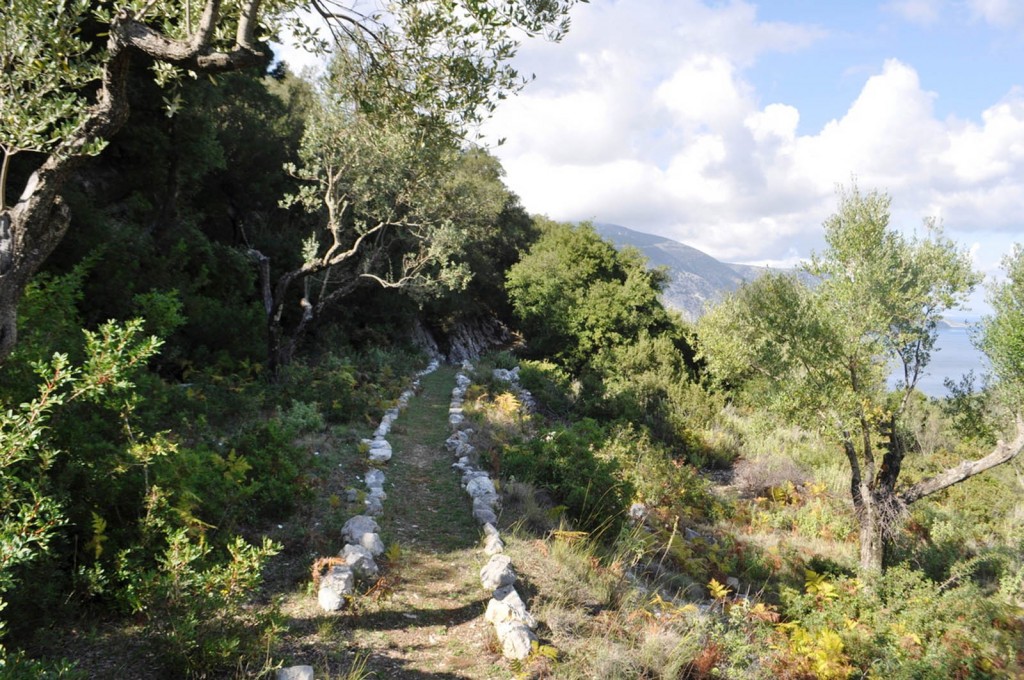
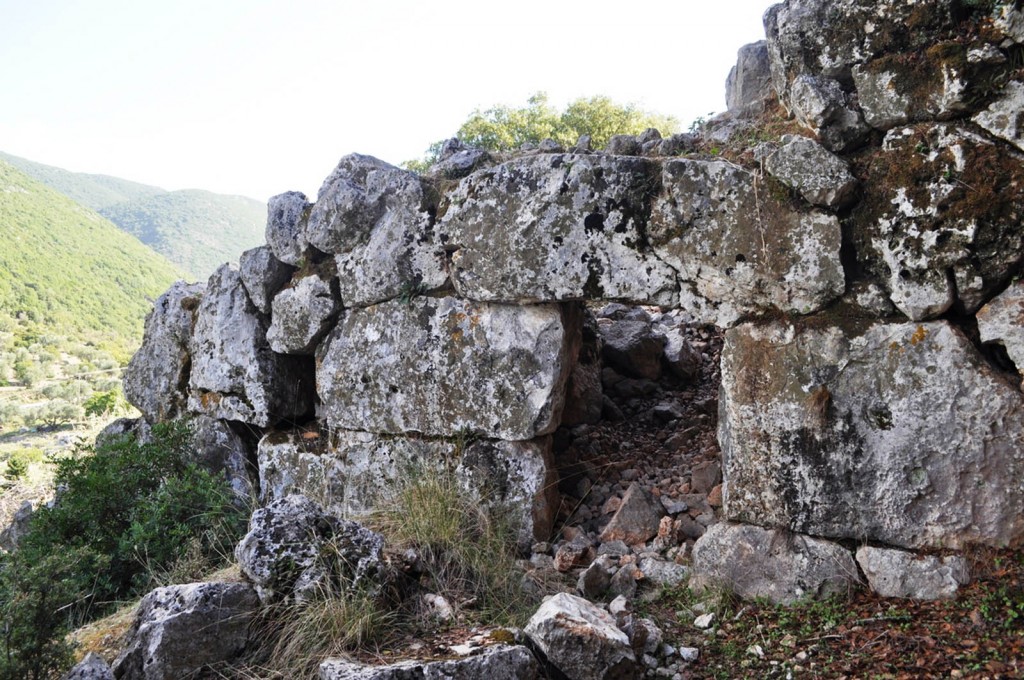
On the saddle of the hill there is, today, a minor road, and it is here where the British School of Archaeology began and conducted their digs. From the vessels, pots and other fragments found here it is clear that Ithaca had developed its own particular production techniques inspired by the Mycenaean tradition. The series of vases and pots found in Aetos constitute the only pre-geometric ceramic works found in western Greece. This distinctive style has been called the ‘Ithacan Pre-geometric style’ and a number of these findings are exhibited in the Archaeological Museum in Vathy. 2
Of all the ruins of settlements in Aetos the oldest is a circular construction with finds of pottery dating back to 1400 BC. These foundation remains together with the surrounding area must probably be identified with a sanctuary dedicated to Apollo, whose worship in Ithaca is mentioned in the Odyssey (Book 20, 277-278). The reconstruction of the topographic data of the Aetos sanctuary by S. Symeonoglou, presents a clear picture of a very old important temple, unique in the Ionian Sea. 3
According to some archaeological researchers of the 19th century, (W. Gell, E. Dodwell, C. Schreiber and E. Schliemann), the mountain pass at Aetos was the site where the palace of Odysseus lay. This view was supported by Sarantis Symeonoglou, Professor of archaeology at Saint Louis University in 1990.
References:
1 Ministry of Culture and Sports
2 Ferentinou Ariana, Review of Archaeological Research in Ithaca, Kefallonia Chronicles,
Volume 1
3 Vikela Eugenia, Ithaca and the other Ionian Islands from Prehistory to the 5th century. BC .: Convergence and Divergence, pp. 25-64, Myths, Texts, Pictures: Homer’s Poems and ancient Greek art, Centre of Odyssean Studies, Ithaca 2010
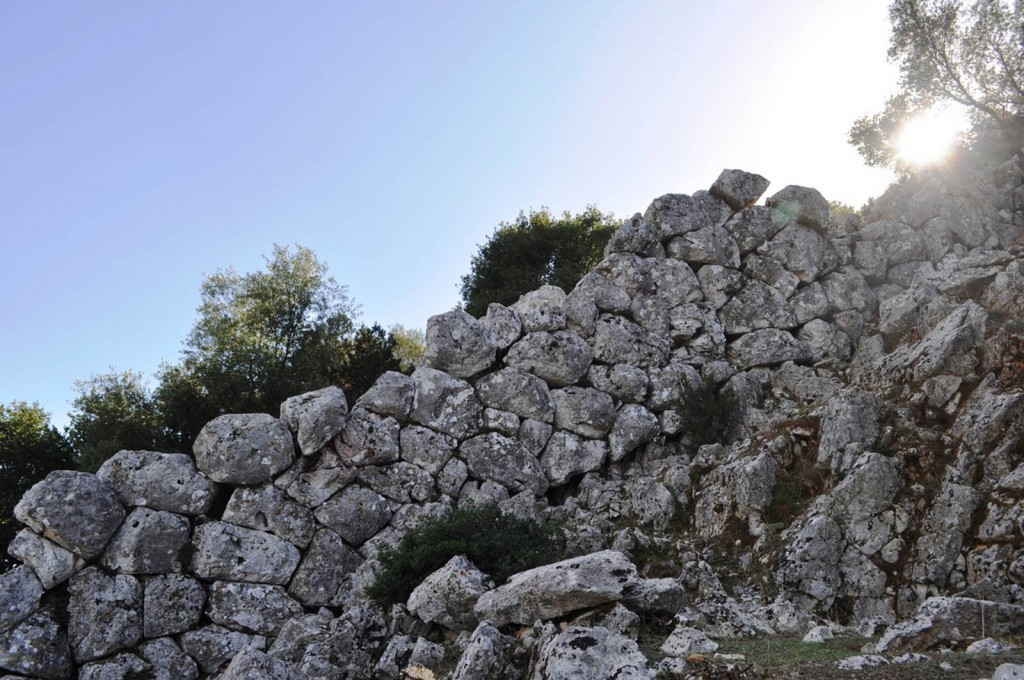
The Pre-Hellenistic Settlement at Pilikata
Pilikata is to be found just north of Stavros, where the Archaeological Museum of North Ithaca is situated. The whole area has been designated of Archaeological interest and the 750 square metre site is the home of the remains of human dwellings dated to the pre-Hellenistic and Mycenaean periods. 1
The findings in the 1930s of the British School of Archaeology showed that there was continuous human settlement on the site between the years 3000 B.C. and the 12th century B.C., or to the end of the Mycenaean period. This group concluded that what was the centre of Odysseus’ kingdom was close to what is now the city of Stavros.
Archaeologists have uncovered a wall that encircled the settlement and from remnants found close by we have deduced that it is Mycenaean. At the top of Pilikata hill there are remains of stone walls and a short stone walkway or path. But, one of the most significant discoveries on this site was a cache of large clay vessels buried under the stone floors of the inside of pre-Hellenistic dwellings.


Archaeologists, having found evidence of life here between 3000-2500 B.C., now believe that there had been a walled pre-Hellenistic settlement on this site. Ithaca is thus known to have been one of the very few pre-Hellenistic settlements on Greek soil and its importance in the cultural, historical development of Western Greece is self-evident. The findings and discoveries in Ithaca place the start of its history as far back as 1500 years before the times referenced in the Odyssey. 2
In the considered opinion of W.A. Heurtley, Odysseus’ palace was to be found on Pilikata hill. However, the site is not easy to access so it is necessary to find a guide who can show you the remains of the ancient walls and the fossilised bones in what was a cemetery. Findings from this site are exhibited in the Archaeological Collection of Stavros.
References:
1 Permanent list of designated archaeological sites and monuments of Greece
2 Ferentinou Ariana, Review of Archaeological Research in Ithaca, Kefallonia Chronicles,
Volume 1
Loizos’ Cave
Loizos’ cave lies at the northwest corner of Polis Bay, known also as the harbour for Stavros. In the nineteenth century, the cave was part of the property of Dimitrios Loizos, who, when working on the roof of the cave, came across a find of relics and remnants. Some of these were purchased by Schliemann when he first visited Ithaca.
Because the cave is located on the beach, exploration and excavation there was very difficult. Indeed, since ancient times the sea level often reached the cave’s roof and as a result much of the overhang had collapsed. Seismic activity also contributed to the damage.
The first extensive activity in the cave was conducted in the 1930s. Sylvia Benton headed a team from the British School of Athens. The rich collection of discovered vessels suggested that the cave had been a place of worship from as far back as 2500 B.C., through the Mycenaean period to Roman times.
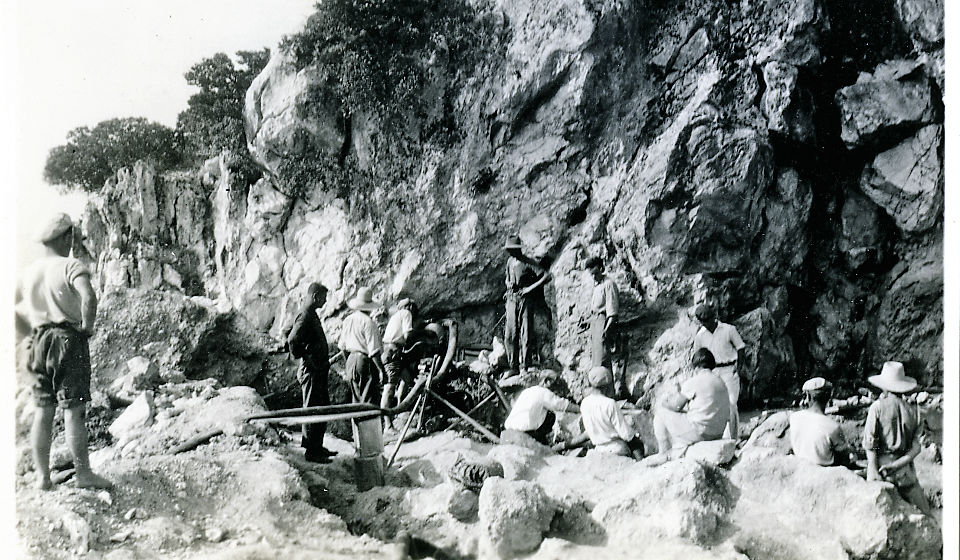
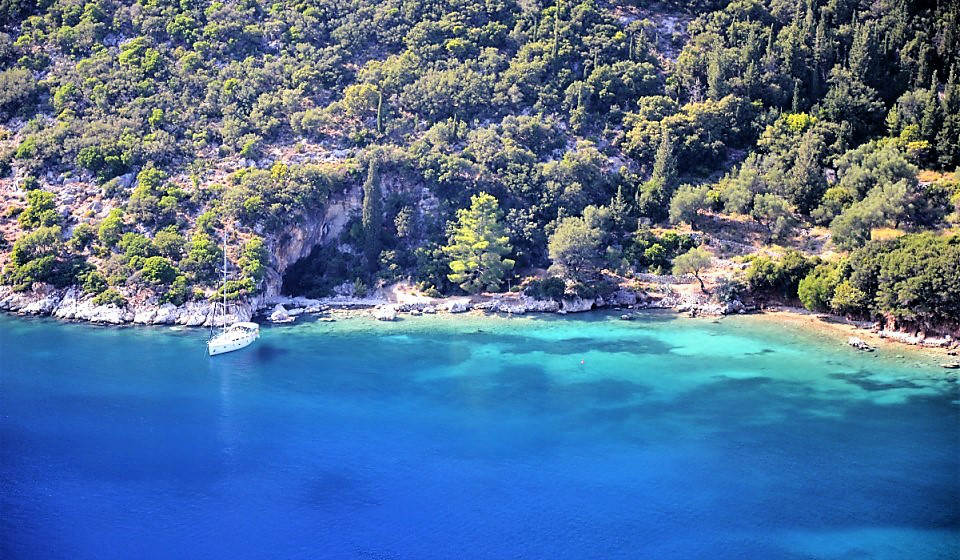
A variety of engravings on tiles, shells and stones indicate that a number of goddesses were worshipped here—Artemis, Athena, Hera and the Nymphs. It seems that Odysseus himself was glorified here as it is on this site that sections of a clay mask of a woman , dated to the second century before Christ, bearing the prayer to Odysseus—Efchin Odyssei—was discovered. Other significant findings include a clay Corinthian plate from the sixth century B.C., with the image of a rooster engraved on it. Of very major importance are the bronze tripods dated to the 9th century B.C. where, despite their poor condition, it is still evident that they are the work of some excellent local workshop.1 It should be remembered that according to the Odyssey, Odysseus brought pots back to Ithaca that were gifts from the Queen of the Phaeacians. 2 .
All of these findings can be viewed and enjoyed at the Stavros Archaeological Collection.
References:
1 The bronze tripods were transferred to the Archaeological Museum of Athens for maintenance. However, there is no information given about the maintenance process.
2 Ferentinou Ariana, Review of Archaeological Research in Ithaca, Kefallonia Chronicles,
Volume 1
The inscription “ΟΔ”
An inscription that reads “OD” is engraved on a flat rock lying in the old road (mule road) which connected South Ithaca to the North before the construction of vehicular roads, in the section between Aetos and Agios Ioannis. The inscription was assessed and officially registered for the first time in the ancient Greek inscriptions in 1897. More specifically, the inscription was recorded with serial number 657 in the list Inscriptiones Graecae 1 26 of 1897 and number 1684 in the list of 2001 2.
Regarding the interpretation of the inscription, it is argued that it represents the initial letters of the word “Odysseus” The inscription served as one of the archaeological sights of Homeric Ithaca for many years. It impressed foreign visitors as well as the locals who regarded it as proof of Odysseus’ presence on the island and proudly showed it to foreign tourists.

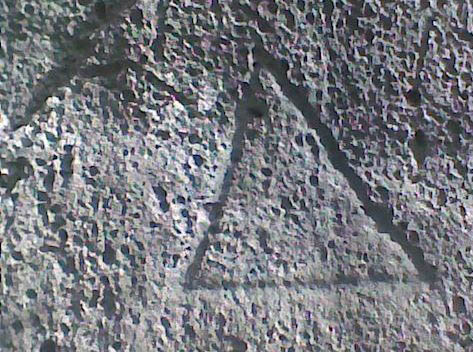
British geographer and antiquary William Gell, who visited Ithaca in 1806 3, the English Colonel William Martin Leake, who visited Ithaca in the same year (1806) 4 and Henry Schliemann, who visited Ithaca in 1868 5, some sixty years later, all give us a detailed description of the inscription “OD”.
Today, the visitor can distinguish the upper part of the letter O and very clearly the letter D. Each letter measures about 27×33 cm. The rock lies in the middle of the path which starts from “Chordaki” in Aetos and leads to Agios Ioannis, an almost horizontal route on the western slopes of Ithaca between “Chani” and the sea.
References:
1 Inscriptiones Graecae (IG) (Greek Inscriptions) is a program of the Academy of Sciences in Berlin that aims to collect and publish all known ancient inscriptions from the mainland and the islands. 49 issues have been published so far, some of them in several editions. Inscriptiones Graecae Website
2 Dimitri I. Paizis – Danias, The archaeological treasures of Ithaca, Phil-Homeric Society of Ithaca “Efchin Odyssei”, Athens 2011, p. 610.
3 William Gell, The geography and antiquities of Ithaca, London 1807, p. 86-87, translation Dimitri I. Paizis – Danias ibid, pp 206-207.
4 William Martin Leake, Travels in northern Greece, London 1835, Volume 3 p 37. translated by Dimitri I. Paizis – Danias , ibid, p. 237.
5 Heinrich Schliemann, Ithaca, Peloponnese, Troy, Editions Collection, 2009, pp. 49-50.

Marmarospilia – The Nymphs’ Cave
Odysseus hid the gifts from Alcinous, King of the Phaeacians, in the cave of the Nymphs when he returned to Ithaca. That is believed to be Marmarospilia a cave which lies above the seashore of Dexia because its shape is consistent with the description in Book 13 of the Odyssey. 1
Archaeologist Sarantis Symeonoglou, Professor at Saint Louis University, conducted excavations in Marmarospilia from 1998 to 2001. Much of the cave floor was covered by piles of boulders, a possible indication that the cave was destroyed by an earthquake in 373 BC. The findings are figurines of Nymphs and their partner Pan, pots with dedicatory inscriptions and two rings that perhaps belonged to young priestesses.
The excavation continued in the space below the floor of the hitherto known cave and a second cave of the same size but even deeper than the first one was exposed. The excavation reached a depth of 36 m. from the ceiling of the cave. 2


In a letter to the Directorate of Paleoanthropology and Speleology of Southern Greece ( dated February 15, 2007), Professor S. Symeonoglou stated that, as deep as 8.50m, bones of rare animals, mainly deer, which had been sacrificed to the Nymphs were found . At a depth of 15.50m, the top of a tunnel which leads to the east of the cave towards Vathy was found and this rather confirms the description of Homer that Odysseus easily entered the dark cave from the shore of his landing. The entrance to the tunnel continues to a depth of 18m, where the excavation stopped in 2001. The tunnel was further explored (but not excavated) up to a total depth of 24m where it was found that it had been closed with stones that fell in the earthquake of 373 BC.
Since 2001, the Cave of the Nymphs can not be visited until the wider area has been developed.
References:
1 In the Odyssey (Book 13, 103-112), there is a detailed description of the sanctuary of the nymphs where, according to Homer, there are many stalagmites and stalactites, never-failing springs, an entrance for men and one for immortal gods. In Book 13 (347-350) the Goddess Athena shows Odysseus the cave where the Naiads are worshiped and where sacrifices are offered to them. In Book 13 (366-371) Athena and Odysseus enter the deep cave and look for places to hide the Phaeacian treasures. Then Athena closes the entrance with a large stone.
2 The Siren, Newsletter of Odyssey Project, no.9 (2001), Washington University in St Louis

Archaeological Site of St Athanasios – School of Homer
In Northern Ithaca, on the eastern slopes of the mountain of Exoghi, stands the archaeological site of ‘St Athanasios- School of Homer’. Remains of buildings had been visible for centuries and sporadic research had been undertaken by Greek and foreign archaeologists (Vollgraff, British School of Athens, Kyparissis). 1
The Department of Archaeology of the University of Ioannina, under the supervision of the archaeologists Thanasis Papadopoulos and Litsa Kontorli-Papadopoulos, undertook excavations in the area in the years between 1994-2012. These excavations led the team to the conclusion that they had discovered a large acropolis -type complex of buildings. 2 According to the excavators, the complex of buildings dated back to the prehistoric period. 3 Specifically, the beginnings of habitation were given as the Middle-Helladic period (1900- 1600 BC) and it continued in the Post-Helladic, or Mycenaean period (1600-1100 BC). According to Thanasis and Litsa Papadopoulos, the building complex was in use until at least the Hellenistic period. This is testified to by its various architectural structures, like the Hellenistic tower. During Roman times the area was used as a burial ground. 4


The complex is built on two ‘terraces’ or andira 5 that are joined by two staircases sculptured into the rock. On the bottom terrace, a large, three-sectioned, rectangular structure was found, having the dimensions 21.50 x 11.50 meters. It resembled similar structures of Mycenaean palaces in Mycenae, Tiryns and Pylos. To the west of the three-sectioned building, among other things, a large rectangular building with a subterranean storeroom for foodstuffs was discovered. Prehistoric buildings such as storerooms, baths, workshops of metal and supplementary rooms were discovered on the upper terrace.
The building complex is surrounded by cyclopean walls of defence 6 that have four gates. The primary (Southern) gate is bordered by a carefully built wall and its frame consists of large, wrought, square rocks. A prehistoric well was discovered near this gate.
Eastwards, and at a small distance from the building complex, there is an underground spring that serves to provide water to the inhabitants of the acropolis in times of siege and enemy attacks. The spring dates back to the Mycenaean period (1300-1200 BC.)
East of the subterranean spring, a large cyclical, prehistoric building with a stepped entranced was investigated. The efforts to remove the sand deposits yielded various finds. Among these, the large number of clay plates are of special interest. One of these has engraved scenes of the Odyssey- like the depiction of a ship with a man sitting, tied to the mast, monster-like, mythical forms (birds with a woman’s face, a human form with the head, tail and legs of a pig etc.). 7


The site of St Athanasios- School of Homer is of strategic importance. The acropolis, from its defensive stronghold and vantage-point on the slopes of the mountain of Exoghi, towers over the fertile and well-hydrated basin of Northern Ithaca. Due to its position on the Pilikata Hill, it has direct view, access to and surveillance over three harbours: that of Afales to the North, Polis to the South-west and Frikes to the East. 8
In August of 2010, the professor of Prehistoric Archaeology and member of the excavating team, Thanasis Papadopoulos, identified the acropolis of the site ‘St Athanasios- School of Homer’ as the palace of Odysseus, stating that, “according to the facts as they are presented today, movable or immovable, that are of great significance, with every scientific reservation, we believe that we stand before the palace structure of Odysseus and Penelope, the only palace of the Homeric Epics that has yet to be uncovered”. 9 The official publication of the results of the excavations is awaited.
The archaeological site is not open to visits until the necessary works of restoration and preservation on the newly-discovered monuments have been accomplished.
References:
1 Paizis-Danias, D.I. The archaeological treasures of Ithaca, Phil-Homeric Society of Ithaca ‘Efchin Odyssei’, Athens 2011, p. 867.
2 The ‘acropolis ‘is the highest area of an inhabited region. It is surrounded by walls and provided refuge to the populace when attacked by the enemy.
3 The prehistoric period includes the period from the appearance of mankind until 1100 B.C. The Mycenaean period evolved during the latter part of the prehistoric age (approximately 1600-1100 B.C)
4 Papadopoulos Th. and Kontorli- Papadopoulos L. Prehistoric Archaeology of Western Greece and the Ionian Islands, University of Ioannina, 2003, p. 195.
5 ‘Terrace’ or ‘Andiron’ was the horizontal surface that was created, usually on the slopes of mountains, that supported a building or some other structure.
6 The cyclopean walls were walls of the Mycenaean period, built of large, hewn rocks.
7 Papadopoulos Th. and Kontorli-Papadopoulos op cit, pgs. 195-204. Litsa Kontorli-Papadopoulos, “Excavations of the University of Ioannina in Northern Ithaca 1994-2007”, in the website: www.friendsofhomer.gr, with the electronical address of the article being here, Paizis-Danias, D.I. The Archaeological Treasures of Ithaca, op cit, pgs. 867-868. Paizis-Danias, D.I. Light on Homeric Ithaca, accompanying book by the exhibition of the same name held in Stavros of Ithaca, 2013, p. 36. Paizis-Danias, D.I. Exhibition with the name ‘Light on Homeric Ithaca’, Stavros, Ithaca, 2013, informative label 8.
8 Papadopoulos Th. and Kontorli-Papadopoulos op cit, p. 195. Paizis-Danias, D.I. Light on Homeric Ithaca, op cit., p 35.
9 Paizis-Danias, D.I. The archaeological treasures of Ithaca, op cit., p. 866.


